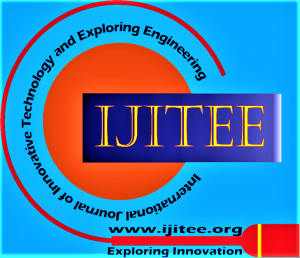Lipid-Polymer Based Nanoparticles as a New Generation Therapeutic Delivery Platform for Ulcerative Colitis in Vitro/in Vivo Evaluation
Birendra.Shrivastava1, K.Venkata Gopaiah2, G.Sudhakara Rao3
1Birendra.Shrivastava, Principal & Professor, Jaipur national University, Jaipur, Rajasthan. K.Venkata Gopaiah, Research Scholar, Jaipur national University, Jaipur (Rajasthan), India.
2K. Venkata Gopaiah, Konerulakshamaiah Education Foundation,k l College of Pharmacy, Vaddeswaram, Guntur (A. P), India.
3G. Sudhakara Rao, Vishwa Bharathi College of Pharmaceutical Sciences,Guntur (A. P), India.
Manuscript received on 02 June 2019 | Revised Manuscript received on 10 June 2019 | Manuscript published on 30 June 2019 | PP: 3351-3359 | Volume-8 Issue-8, June 2019 | Retrieval Number: H7234068819/19©BEIESP
Open Access | Ethics and Policies | Cite | Mendeley | Indexing and Abstracting
© The Authors. Blue Eyes Intelligence Engineering and Sciences Publication (BEIESP). This is an open access article under the CC-BY-NC-ND license (http://creativecommons.org/licenses/by-nc-nd/4.0/)
Abstract: The headway of the new medication organization frameworks (NDDS) was a theme of extraordinary enthusiasm for a large number of the pharmaceutical organizations since the advancement of the new particle forced a critical consumption of capital, HR and expert experience. Irritation in the digestive tract called as IBD. Ulcerative colitis (UC) and Crohn’s infection were regularly called provocative gut sickness (IBD). Lipid nanoparticles (NC) were nanocrystalline suspensions, encased by lipids that are strong at room temperature. NCs are innovative of nanoparticle transporters, notwithstanding common ones, for example, liposomes, lipid emulsions, and polymeric nanoparticles. The NCs were set up by the hot homogenization technique utilizing an assortment of extents of stearic corrosive and triglyceride monostearate, and Budesonide picked as the model medication for the NC readiness. Guar gum picked as a polysaccharide for the planning of NC. The readied NCs portrayed by molecule estimate, polydispersity file, surface charge, shape and surface morphology, embodiment productivity and in vitro examinations were performed in different disintegration media. The extra chose F6 definition completed for in vitro discharge energy, strength examines and in vivo examinations. The investigation started with preformulation contemplates on the chose medication hopeful Budesonide. A few parameters were contemplated, including bright (UV) absorbance, infrared range, liquefying point, solvency studies and differential checking calorimetry (DSC). The NC arrangement process was effectively reached out on a research facility scale, demonstrated simple execution and took into consideration a reproducible scattering of NC as far as molecule estimate, embodiment productivity, stacking effectiveness, polydispersity record, and surface morphology. By SEM and TEM. Discharge ponders within sight of rodent cecal substance indicated more prominent medication discharge at 24 hours. of disintegration, which was very differed of the medication discharged without rodent cecal substance. It was because of the corruption of guar gum within sight of rodent cecal substance. The in vitro discharge energy examined in the F6 detailing. The detailing indicated Korse-Meyer-Peppas as a best-fit model and pursues the vehicle of Super Case-II. The results of in vivo studies revealed that lipid nanoparticles were the most advisable for colon-specific drug delivery of Budesonide. It ensures that lipid nanoparticles would be therapeutically useful in the colonic region.
Keyword: Novel Drug Delivery systems, Ulcerative colitis, Nanoparticles, Nanocrystalline suspensions.
Scope of the Article: Bio-Science and Bio-Technology.
